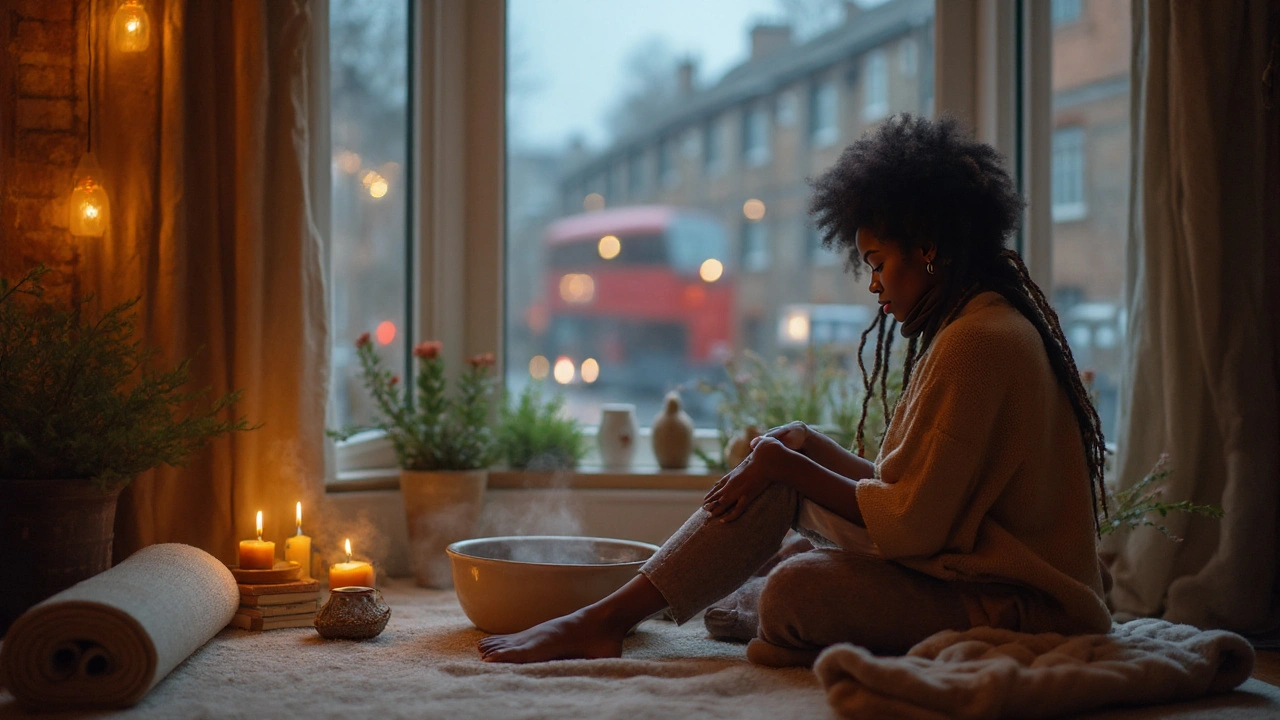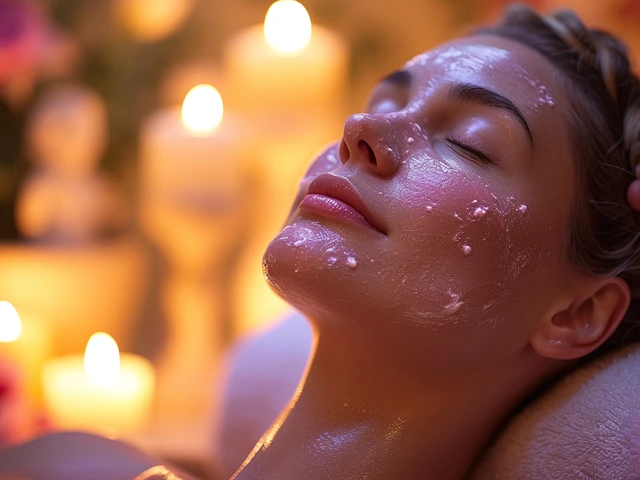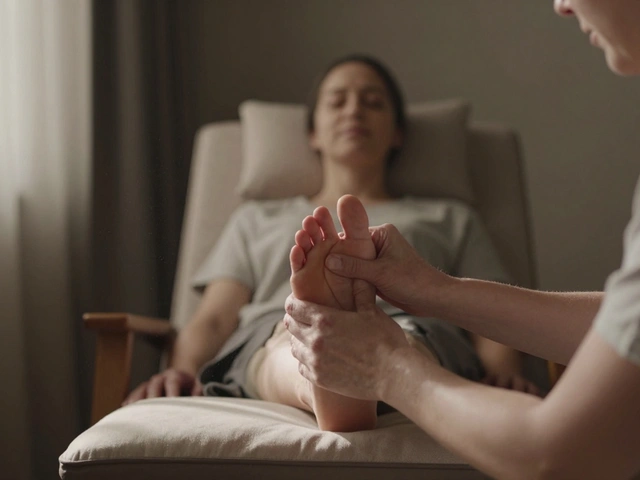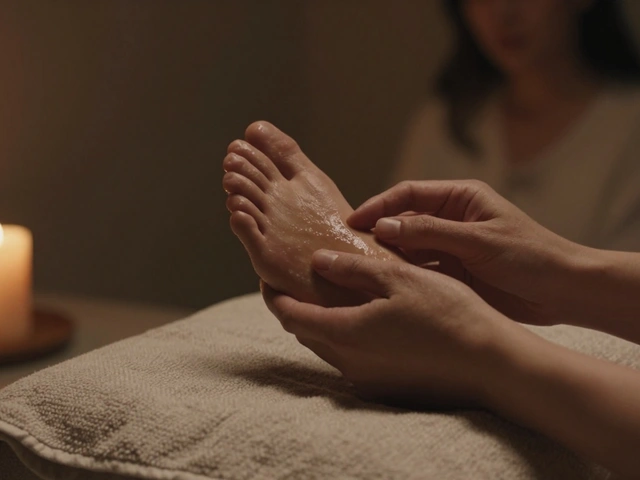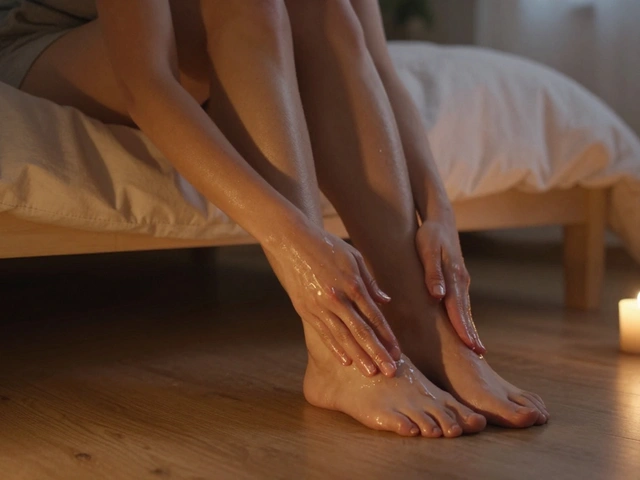You’re chasing better sleep, calmer nerves, and a body that doesn’t feel like it’s holding onto every last ounce of stress. If you want a simple practice that works with what you already have-your hands and your feet-many people try reflexology. The promise is gentle: press specific points on the feet (or hands) to nudge your nervous system toward balance and ease. The catch? It’s supportive, not magical. Done right, it can lower stress, help you sleep, and take the edge off pain. It won’t cure disease.
I live in Wellington where the wind can rattle your bones on a busy day. A 10-15 minute foot routine at night has saved me more than once. If you’re curious, this guide shows what reflexology can realistically do, how to try it safely at home, when to see a professional, and simple routines that slot into real life-workdays, travel, post-run, and those wired-at-9pm nights.
TL;DR: What Reflexology Can Do (and What It Can’t)
- What it helps most: relaxation, perceived stress, sleep quality, and mild-to-moderate pain. Small randomized trials and clinical reports point to short-term relief-for example, lower anxiety and better sleep after sessions. National health bodies like NCCIH (2022) describe reflexology as promising for relaxation, with mixed evidence for specific conditions.
- What it won’t do: diagnose illnesses, remove “toxins” through your feet, or replace medical care. A Cochrane-style takeaway from multiple reviews: effects vary, and the evidence base is limited by small samples and varying methods.
- How it works (in practice): steady pressure on mapped zones of the feet signals the nervous system to shift out of fight-or-flight. Think downshifting, not flipping a switch.
- How it fits into your week: 10-20 minutes, 3-5 days a week. Expect a calm body, easier mood, and better sleep after a few consistent sessions.
- Safety snapshot: generally gentle and safe. Avoid strong pressure with acute injuries, severe foot issues, deep vein thrombosis, active infections, or uncontrolled diabetes complications. Ask your clinician if you’re pregnant, on blood thinners, or in cancer treatment.
How to Practice Reflexology Safely at Home (and When to See a Pro)
Start simple. You don’t need to memorize a full chart to get results. You’re mainly after a nervous system reset and tension release. Here’s a routine you can learn in a single read and refine with practice.
Setup
- Time: 10-20 minutes. Pick a consistent slot-before bed works well.
- Gear: clean hands, clean feet, a towel, and a dab of lotion or oil if your skin is dry.
- Position: sit where you can reach both feet without straining your back. Support your knee on a cushion.
- Breath: slow through your nose, long slow exhale. Try 4-6 seconds in, 6-8 seconds out.
Three core techniques
- Press-hold: sink your thumb or knuckle in slowly for 3-5 seconds, then release. Gentle pressure, never stabbing or poking.
- Thumb walking: bend your thumb and “walk” it forward millimetre by millimetre along an area. It’s like a tiny caterpillar moving across the sole.
- Circle-glide: small circles with light pressure to warm up and cool down each zone.
Basic map (no need to memorize every line)
- Big toe tip: head/brain zone-nice for headaches and mental overload.
- Ball of foot: chest/lungs-soothing for stress or tight breathing.
- Arch: stomach/liver/pancreas/intestines-helpful for gut tension.
- Inner edge of arch: spine line-great for posture stress and back tension.
- Center of sole, just below the ball: kidney/adrenal region-good for wind-down.
- Heel: pelvic/sciatic area-go gentle if heels are sensitive.
Step-by-step nightly routine (12-15 minutes)
- Warm up (2 minutes): hold your right foot with your left hand; circle the ankle, flex/point toes slowly. Rub the sole with your palm to warm it.
- Spine line (1-2 minutes): thumb-walk the inner arch from heel to big toe base. If you find tender spots, press-hold 3 seconds, release, and keep moving.
- Calm head space (1 minute): press-hold the tip and pad of the big toe. Add tiny circles if that feels nice.
- Breathe easier (1-2 minutes): work across the ball of the foot-slow thumb walking from the big toe side toward the little toe side.
- Settle the gut (1-2 minutes): glide and press-hold across the arch, especially the center. Gentle is enough.
- Reset stress (1 minute): press-hold the point just below the ball of the foot, center-ish. Aim for a calm, deep pressure that makes you sigh.
- Heel sweep (30 seconds): smooth circles around the heel, then a few presses on each side.
- Switch feet and repeat.
- Finish (1 minute): rub both feet briskly to warm them, then rest with hands on your belly. Longer exhale than inhale.
Pressure and pain rules of thumb
- Use 3-5 out of 10 pressure. This should feel good or “hurts so good,” never sharp.
- If you feel electric, stabbing, or burning pain, back off or stop.
- If you bruise, you’re pushing too hard.
- Minor tenderness can be normal; intense pain is a red flag.
When to see a professional
- Your foot pain is new, severe, or not improving after a week of self-care.
- You have numbness or tingling you can’t explain (get checked for nerve or vascular issues).
- You live with complex health conditions and want an integrated plan-look for a reflexologist who collaborates with your GP or physio.
- You’re pregnant and want targeted support for sleep or swelling-book with someone experienced in maternity care.
Safety notes you shouldn’t skip
- Avoid deep pressure with: suspected deep vein thrombosis, active foot/ankle infection, open wounds, uncontrolled diabetes complications (ulcers, severe neuropathy), recent fractures/sprains, or severe peripheral vascular disease.
- On blood thinners? Use light pressure only.
- During cancer treatment: many people find gentle reflexology soothing for anxiety and sleep. Clear it with your oncology team first; skip any area with lymphedema or infection risk.
- Pregnancy: gentle work is usually fine; avoid intense pressure around the ankles if you’re anxious about triggering contractions. If in doubt, talk to your midwife.
What the evidence says (plain English)
- Relaxation and stress: consistent findings show short-term drops in tension and anxiety after sessions (NCCIH, 2022 overview).
- Pain: results vary. Some small trials report lower pain scores for headaches, low back pain, or cancer-related discomfort; others find no difference versus a good foot massage. Reviews point out small sample sizes and mixed methods.
- Sleep: several trials in hospital and community settings report better subjective sleep after a series of sessions.
- Big picture: useful for comfort and coping. Not a stand-alone treatment for disease.
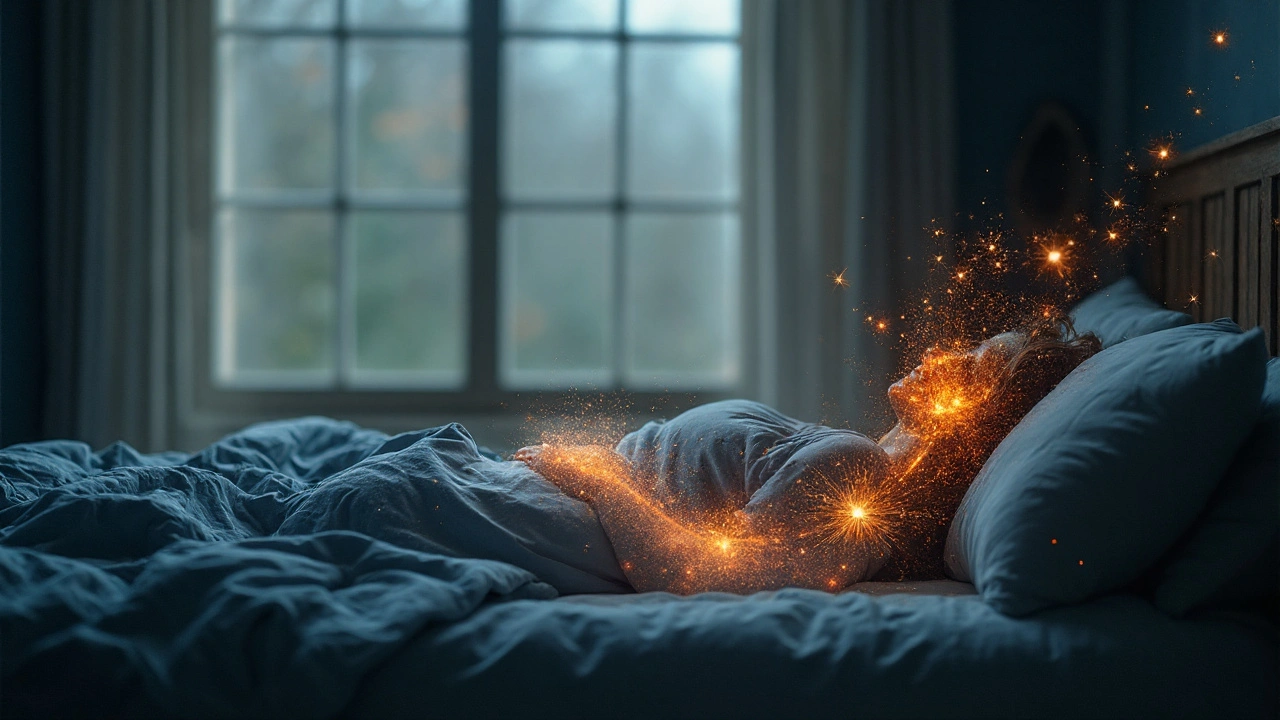
Real-World Routines, Use Cases, and a Handy Checklist
Not every day is the same. Here are targeted mini-routines you can drop into your week, plus a checklist so you actually do them.
1) High-stress workday reset (6 minutes)
- Breath primer: 3 slow breaths (in for 4, out for 8).
- Big toe tips: press-hold 3 times each side (head zone).
- Ball of foot sweep: thumb-walk across the ball on both feet (breathing easy, steady pace).
- Center sole press: hold 10 seconds, twice each foot (kidney/adrenal area).
- Finish with palm rubs until your feet feel warm.
2) Tension headache helper (8-10 minutes)
- Big toe pads and tips: slow circles, then press-hold (1-2 minutes each foot).
- Base of toes: press-hold just under all five toes (sinus/eye zones).
- Neck line: thumb-walk the base of the big toe down a centimetre (neck/upper spine).
- Spine line: inner arch from heel to toe (1 minute each foot).
- Hydrate and step outside for two minutes of daylight, if you can.
3) Better-sleep wind-down (12 minutes)
- Warm the soles with your palms (1 minute).
- Spine line: inner arch thumb-walk (2 minutes).
- Ball of foot: slow sweep left to right (2 minutes).
- Center sole press: hold 10-15 seconds, three times (each foot).
- Whole-arch glide: lazy figure-eights (2 minutes).
- Finish with a 4-7-8 breath pattern for 1 minute.
4) Sore-feet or plantar fascia relief (10 minutes)
- Toe flexes and ankle circles (1 minute).
- Arch thumb-walking with very gentle pressure (3 minutes total, both feet). Stop if sharp pain.
- Heel circles (1 minute).
- Calf release: roll a ball under your calf or use your thumb to find tight bands (2 minutes each side).
- Finish with a frozen water bottle roll under each foot (30-60 seconds, light pressure).
5) Period cramp soother (8 minutes)
- Warm both feet with palm rubs.
- Heel edges and inner arch (pelvic and spine lines): slow thumb-walk.
- Center sole press: hold 10 seconds, repeat three times per foot.
- Place one warm hand on your belly and one on your chest; breathe longer out than in.
6) Post-run or windy-day loosen up (Wellington special) (7 minutes)
- After your run or a southerly-wind stomp along the waterfront, sit and warm your soles.
- Spine line and heel circles (3 minutes total).
- Arch sweep with light oil if skin’s dry (2 minutes).
- Calf squeeze-release up the muscle (2 minutes).
Mini decision guide: which routine tonight?
- Can’t switch off? Choose Better-sleep wind-down.
- Head like a tight helmet? Tension headache helper.
- Feet barking? Sore-feet routine.
- Stress spike from work or study? High-stress reset.
Practical checklist (print or screenshot)
- Set a time: pick 3-5 nights a week. Alarms help.
- Prep: towel, lotion, quiet spot, cosy socks after.
- Breath: longer exhale than inhale, always.
- Techniques: press-hold, thumb-walk, circle-glide.
- Map basics: big toe, ball, arch, inner edge, center sole, heel.
- Pressure: 3-5/10. Ease off if sharp or electric.
- Hydrate: small glass of water after you finish.
- Track: note stress, sleep, and pain scores (0-10) before/after.
Two workplace hacks
- Under-desk ball: roll a tennis ball under each foot for two minutes mid-afternoon. Easy, discreet, no oil.
- One-minute reset: press-hold the center of each sole through your sock for 10 seconds, repeat twice. Breathe slowly.
What to expect week by week
- Week 1: easier wind-down, warmer feet, some sleep improvement.
- Week 2-3: lower baseline tension, fewer wake-ups at night, small drops in pain scores (1-2 points for many people).
- Week 4+: more consistent benefits if you keep the habit. If nothing shifts, reassess routine, pressure, and sleep basics.
Mini-FAQ, Myths vs Facts, and Next Steps
Is reflexology just a foot massage?
They overlap but aren’t identical. Massage aims to relax muscles and improve circulation in the whole foot and lower leg. Reflexology focuses on specific mapped points tied to body regions. In practice, both can feel great and both can lower stress. You don’t need to pick one forever-use what helps.
Does it actually work?
For stress and sleep, yes-many people feel calmer right away, and clinical studies back short-term relaxation benefits. For pain, results vary by person and condition. Reviews from groups like NCCIH (2022) and summaries in clinical journals say the evidence is mixed: some small trials show pain relief, others don’t. Think “support and symptom relief,” not cure.
How often should I do it?
At home: 10-20 minutes, 3-5 times a week. With a pro: 30-45 minutes once a week for a few weeks, then taper to maintenance if it’s helping.
Will it detox my body?
No. Your liver, kidneys, lungs, skin, and lymphatic system handle waste. Reflexology may improve circulation and relaxation, which can make you feel clearer, but it isn’t removing toxins through your feet.
Can reflexology diagnose health problems?
No. Practitioners might notice tender spots and patterns, but diagnosis belongs with your GP or specialist. Use reflexology for comfort and recovery support, not for detecting disease.
Is it safe in pregnancy?
Gentle work is commonly used for sleep, swelling, and stress. Avoid strong pressure and talk with your midwife. If you’re high-risk or unsure, get the green light first.
What about diabetes or neuropathy?
Be cautious. Avoid pressure on areas with reduced sensation, ulcers, or infections. Keep it light and ask your diabetes team if you’re not sure.
How soon will I notice benefits?
Many feel calmer right after a session. Sleep often improves within a week. Pain relief is variable-track your scores for two to three weeks before you judge.
How do I choose a practitioner?
- Look for training and credentials, plus experience with your goals (stress, sleep, pregnancy, oncology support).
- Ask how they adapt pressure for medical conditions and whether they’re happy to coordinate with your GP or physio.
- In New Zealand, you can look for membership with established professional associations for reflexologists.
What does a session feel like?
Usually warm, calming, and occasionally tender at specific points. You stay clothed except for feet and lower legs. Sessions run 20-45 minutes.
Can kids or older adults try it?
Yes, with gentle pressure. Keep it short-5-10 minutes for kids, 10-15 for older adults unless they prefer more. Always avoid areas with pain, bruising, or skin issues.
Next steps: a simple 14‑day plan
- Days 1-3: do the nightly routine (12-15 minutes). Track stress/sleep scores (0-10) before and after.
- Days 4-7: add the High-stress reset during the day (6 minutes). Keep nights light if you’re short on time.
- Days 8-10: pick one targeted routine (headache, sore feet, or sleep) based on your week.
- Days 11-14: reflect. Did your average stress drop at least 1 point? Sleeping easier? If yes, keep the habit. If no, adjust pressure, shorten steps, or try different timing (morning vs night).
Troubleshooting
- No time: use the One-minute reset twice a day and a 6-minute routine at night. Consistency beats length.
- Sensitive soles: warm with socks and start over the socks for a few days. Use lighter pressure and more circles than presses.
- No change after 2 weeks: review basics-breathing slow, pressure 3-5/10, longer exhale, and keep lights low at night. Try adding a 10-minute walk or stretch before your session.
- New or worsening pain: stop and get checked by a clinician.
A quick word on science and expectations
Reflexology has a long tradition, and modern research is catching up slowly. National and international reviews (for example, NCCIH 2022 summaries and Cochrane-style analyses) suggest reliable benefits for relaxation and a mixed picture for pain and specific medical conditions. That’s why the smartest use is as part of a bigger plan: decent sleep, movement you enjoy, a bit of sunshine during the day, and social connection. In that mix, reflexology often pulls its weight.
The best way to know if it helps you is simple: try a short, regular routine, write down your before/after scores, and see what changes. If your body says yes-quieter mind, easier shoulders, deeper sleep-keep going. If it says no, you’ve spent a few calm evenings learning more about what you need, and that’s still a win.

